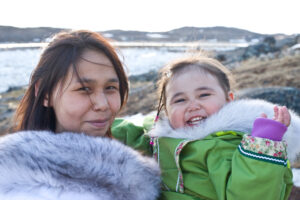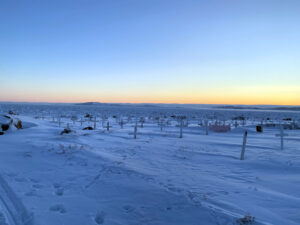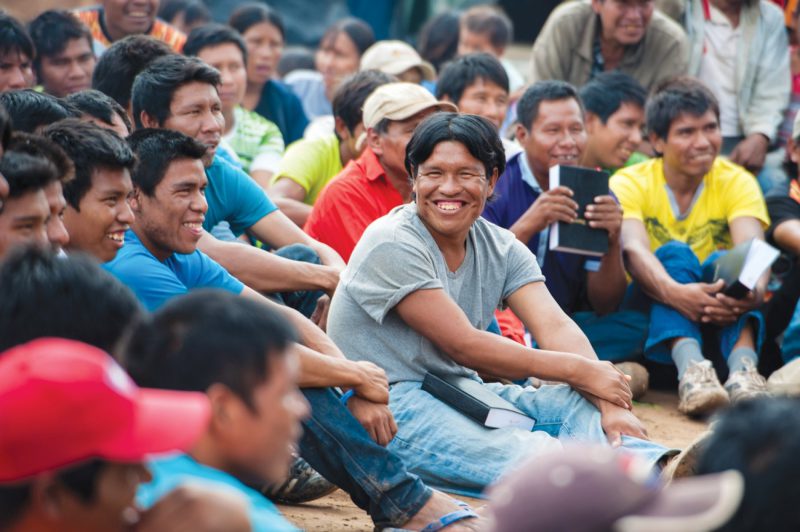
by Bruce Enemark
Back in May of 2018, Josiah and Rachel Van Der Decker (Papua New Guinea) made the survey to find out where to build their house in order to work with Mouk co-workers to translate the Bible into the Anem language. As they arrived, the following took place, as told by Rachel:
“I took a minute to sit down on a bench in the shade, grateful to be out from under the burning gaze of the sun. An old man whose facial features looked Anem made a beeline to come and shake my hand. The next thing I knew, one of his hands held mine, while the other [arm] wrapped around me in a tight embrace. And he was weeping. Loudly. As uncommon as it was for a man to hug a woman publicly, something told me this was okay.
“For this moment in time, the ordinary was eclipsed by the extraordinary. Our arrival had some sort of significance to him. The tears that fell freely from his face and onto my lap were tears of joy. Tears of hope. Tears of a longing fulfilled. ‘He heard the teaching in Pidgin through us Mouk,’ our Mouk co-workers pointed out, ‘but he, along with the rest of these Anem believers, are longing to hear God’s Word in their own language.’ Our coming meant he was one step closer to that day — the day when God’s Word could be read and taught in the Anem language. The day when God would ‘speak’ the Anem language.”
The Van Der Deckers are building their home with the Anem and are looking forward to the challenge set before them of getting the Scriptures translated.
Is there a difference in people’s lives when the Scriptures are finally translated? Do they make a difference? A resounding “yes!” bursts out from the mouths of those who now have the Word in their own tongue, in the language that reaches the depths of their heart. Let me give you some examples of how they responded to God’s Talk in their language.
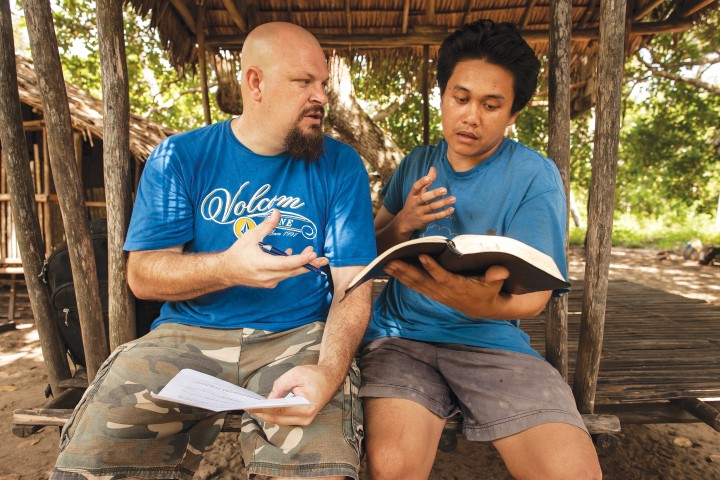
Stephen Crockett, who ministers among the Moi people of the Asia-Pacific Region, recently wrote of meeting with two Moi men who were training to be missionaries themselves. They were doing a comprehension check of some Scriptures with Stephen and the translation consultant, Bob Clark. At the end of it all, one of the Moi men became very serious and said to Stephen,
“You know we’ve learned the [national] language and can read their Bible now, but it’s like the meaning is closed to us. But when we read the Moi Bible, it’s like it’s been opened up to us, and we can understand what the Creator God is trying to communicate with us.”
Other Moi believers have expressed their feelings about the Word in their own language as well. For example, here is one lady:
“Today we are going to gather to read the Creator’s Words. My heart is looking forward to that so much that I will not go to the garden today. Food is small. The Creator’s talk is big. I am thinking, ‘Thank you, Jesus, for all you’ve done for us.’”
Weiwa
One amazing — and saddening — thing is how we take our Bibles for granted. We are so used to being able to sit down with our English Bibles and read any time we want. Let’s look into the hearts of some people who have only recently had a New Testament and some of the Old Testament put into their heart language.
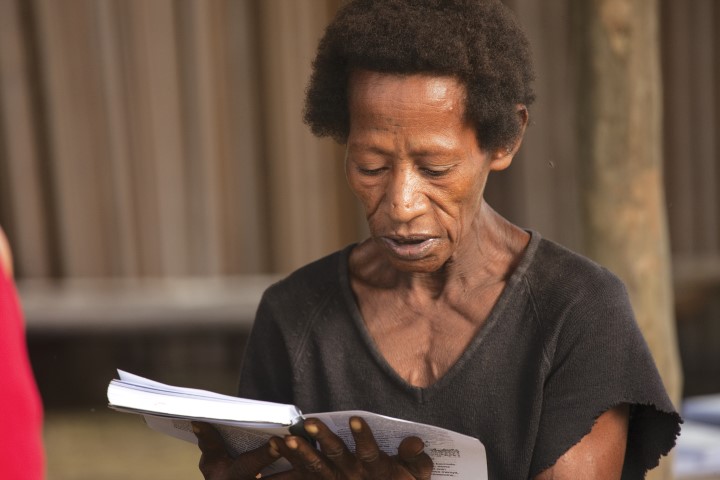
Lisa Kappeler is a translator and translation consultant in Papua New Guinea. She ministers among the Uriay people group. She has had some beautiful experiences as the Uriay begin to hear, read or use their own translation.
One Bible teacher named Tomas said, “I’ve tried to teach this passage [some verses in Psalms], but I didn’t understand what it meant. Now that I can read it in my own language, I completely understand the meaning. Tok Pisin [the national language of Papua New Guinea] flies on top of the trees while the Bible in my language goes right to the base of the trees.” (Note from Lisa: “Flying on top of the trees” relates to it being a very superficial understanding while something that goes “into the bush, to the root of a tree,” hits the main point.) Having the Scriptures in the heart language is key to effective teaching, and teaching in the heart language provides a clear understanding and appreciation of the translated Scripture. They are two complementing ingredients to effective cross-cultural church planting.
Lisa gave another example: “We were translating Acts 17:22-29 as Paul is explaining in Athens about the Unknown God that they worshiped. As we got to the verse that talks about how God is not made with silver or gold or by the hands of men, Aendru [her translation helper] got so excited that he could hardly sit still. He kept saying, ‘That’s so true! God isn’t made of silver stone or gold stone! No, He made all of these things! No man can make Him! No, it’s true. He can’t be made by anything. He made everything!’ He repeated this over and over and couldn’t go any further as he pondered this new understanding of his God!”
She continued, “We were translating Ephesians 3 and as we got to verses 17-19, Stenli [another translation helper] got choked up as he thought about how wide and high and long and deep the love of God is. He said, ‘The more I understand God’s love, the more strongly I can stand even when disputes and hard times come my way. I won’t fall; no, I can keep standing because I’m standing in God’s love.’ Then he leaned over and side-hugged me and said, ‘Thank you for bringing God’s talk to us in our language. It’s so clear in our language.’”
And it isn’t just with Lisa that the Uriay are expressive about the Word in their language. Lisa told me about a man named Imi who told another man in the village during the first part of the foundational chronological teaching, “You’ve got to come listen to this in our language! We finally understand why the flood came! It’s so clear in our language!”
I think one of the most life-changing results of the Word in the heart language is how it affects the believers’ view of their past culture, that to which they clung by tradition. Ken and Kathy Satorius worked on the translation of the Scriptures into the language of the Budik people group of Senegal. “I’m really happy for the arrival of the Word of God,” said Eme, who helped Kathy translate the New Testament. “In times past we couldn’t always tell, but now we can tell what is truth and what is God’s Word and what are traditions. It helps us sort out and discern God’s perspectives of our traditions.”
As God’s Word is put into other languages, the eyes of the readers are opened to the truths that you and I have known and embraced for decades.


